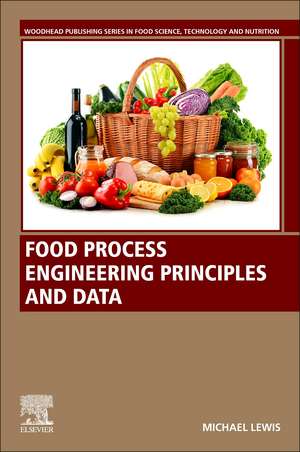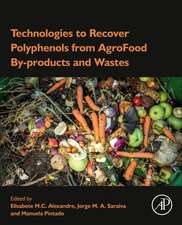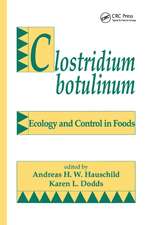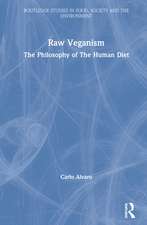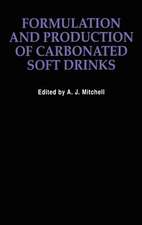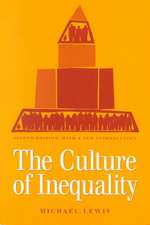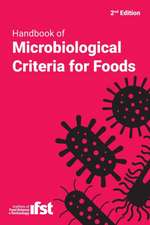Food Process Engineering Principles and Data
Autor Michael Lewisen Limba Engleză Paperback – 20 noi 2022
In addition, chemical engineers and biotechnologists will also benefit from the content of this comprehensive title.
- Thoroughly explores a collection of data on the physical properties of foods and food processing systems
- Presents background information on the chemical, physical and engineering properties of foods
- Includes comprehensive charts with data on food properties
Preț: 1145.14 lei
Preț vechi: 1863.28 lei
-39% Nou
Puncte Express: 1718
Preț estimativ în valută:
219.19€ • 238.17$ • 184.24£
219.19€ • 238.17$ • 184.24£
Carte tipărită la comandă
Livrare economică 14-28 aprilie
Preluare comenzi: 021 569.72.76
Specificații
ISBN-13: 9780128211823
ISBN-10: 0128211822
Pagini: 488
Ilustrații: Approx. 100 illustrations
Dimensiuni: 216 x 276 mm
Greutate: 1.12 kg
Editura: ELSEVIER SCIENCE
ISBN-10: 0128211822
Pagini: 488
Ilustrații: Approx. 100 illustrations
Dimensiuni: 216 x 276 mm
Greutate: 1.12 kg
Editura: ELSEVIER SCIENCE
Cuprins
1. Introduction to food
2. What is it; major food types, complexity, biological variability
3. Food processing - processed foods
4. Food composition- food composition tables- benefits and limitations
5. Food nutritional value - Atwater factors
6. Food pH - pH values for different foods- acid and low-acid foods
7. Units and dimensions
8. Mass balances
9. Some Physical concepts, e.g. derived units, velocity, momentum, acceleration, force, energy and work
10. Food size, shape and other physical characteristics
11. Density and specific gravity
12. Viscosity simple rheology
13. More complex rheology
14. Surface properties
15. Thermal properties
16. Specific heat
17. Latent heat
18. Enthalpy and enthalpy data for food
19. Heat balance calculations
20. Heat transfer
21. Mechanisms, steady state and unsteady state
22. Conductions and thermal conductivity
23. Convection and heat film coefficients
24. Overall heat transfer coefficients and heat exchangers
25. The electromagnetic spectrum, food processing and food analysis
26. Reaction kinetics
27. D values and Z values, thermal process calculations – strengths and weaknesses
28. Properties of steam and refrigerants
29. Properties of air-water systems
30. Some electrical properties, temperature measurement
31. Mass transfer - diffusion
32. Packaging material properties!
33. Membrane processing
34. Combined heat and mass transfer - e.g. drying
35. Unit Operations
36. Novel processing methods
37. Processing measurements; temperature, pressure and flow
38. Homogenisation, size reduction
39. Food colour
40. Food flavour
41. Food texture
42. Water useage/Energy conservation/waste and its disposal
43. Emerging topics, e.g. sustainability, 3-D printing
2. What is it; major food types, complexity, biological variability
3. Food processing - processed foods
4. Food composition- food composition tables- benefits and limitations
5. Food nutritional value - Atwater factors
6. Food pH - pH values for different foods- acid and low-acid foods
7. Units and dimensions
8. Mass balances
9. Some Physical concepts, e.g. derived units, velocity, momentum, acceleration, force, energy and work
10. Food size, shape and other physical characteristics
11. Density and specific gravity
12. Viscosity simple rheology
13. More complex rheology
14. Surface properties
15. Thermal properties
16. Specific heat
17. Latent heat
18. Enthalpy and enthalpy data for food
19. Heat balance calculations
20. Heat transfer
21. Mechanisms, steady state and unsteady state
22. Conductions and thermal conductivity
23. Convection and heat film coefficients
24. Overall heat transfer coefficients and heat exchangers
25. The electromagnetic spectrum, food processing and food analysis
26. Reaction kinetics
27. D values and Z values, thermal process calculations – strengths and weaknesses
28. Properties of steam and refrigerants
29. Properties of air-water systems
30. Some electrical properties, temperature measurement
31. Mass transfer - diffusion
32. Packaging material properties!
33. Membrane processing
34. Combined heat and mass transfer - e.g. drying
35. Unit Operations
36. Novel processing methods
37. Processing measurements; temperature, pressure and flow
38. Homogenisation, size reduction
39. Food colour
40. Food flavour
41. Food texture
42. Water useage/Energy conservation/waste and its disposal
43. Emerging topics, e.g. sustainability, 3-D printing
